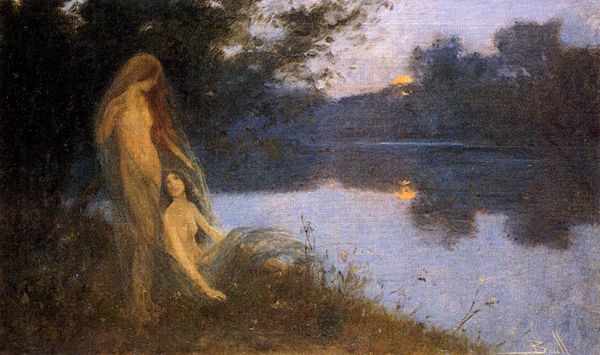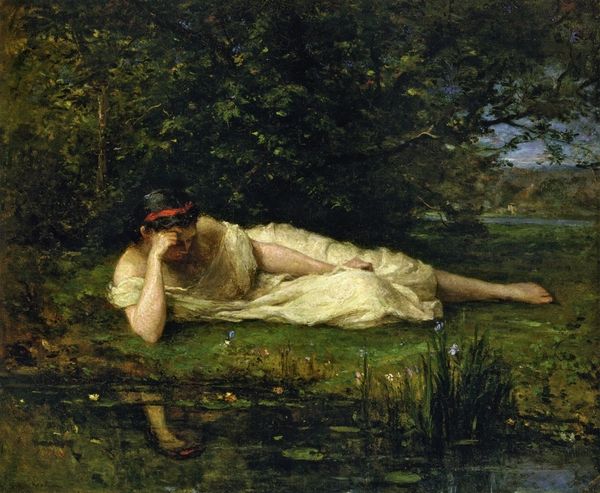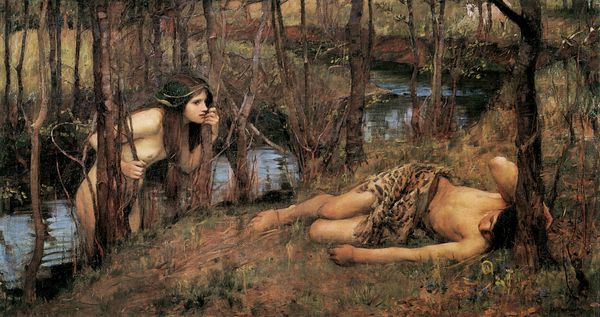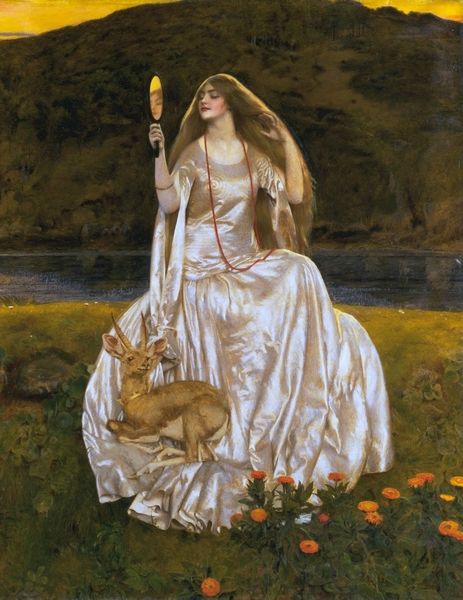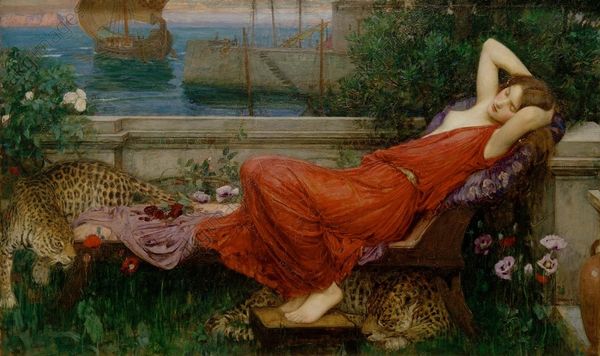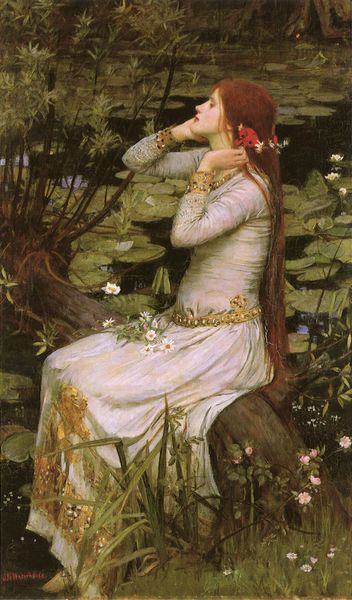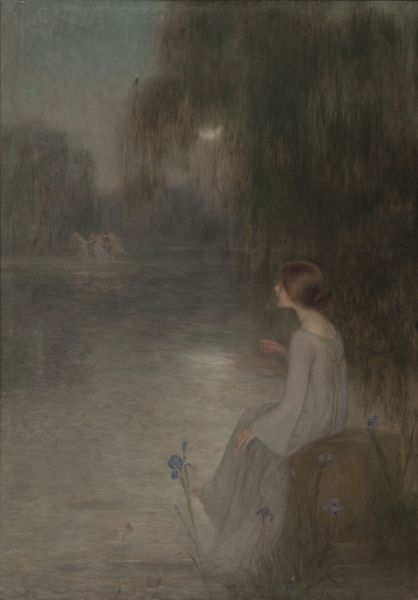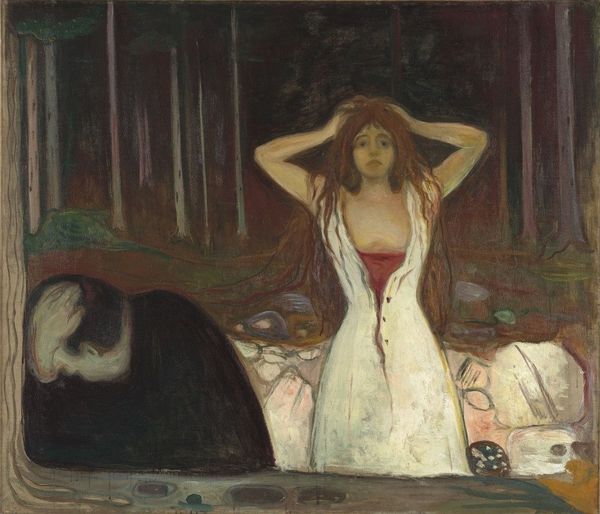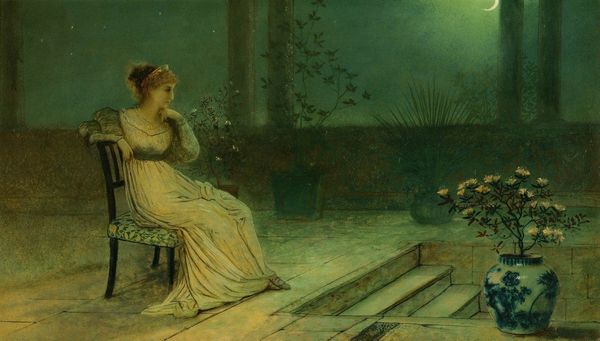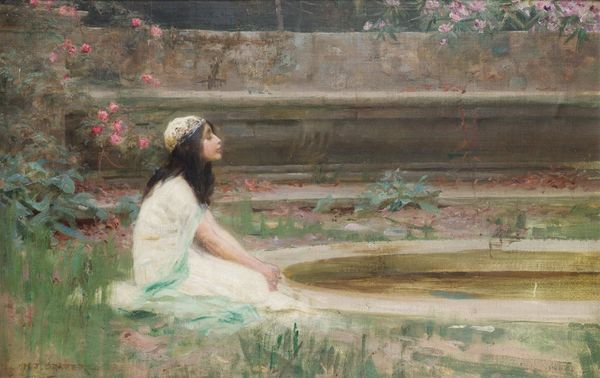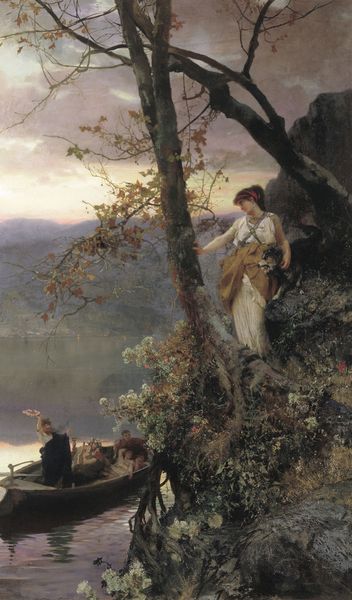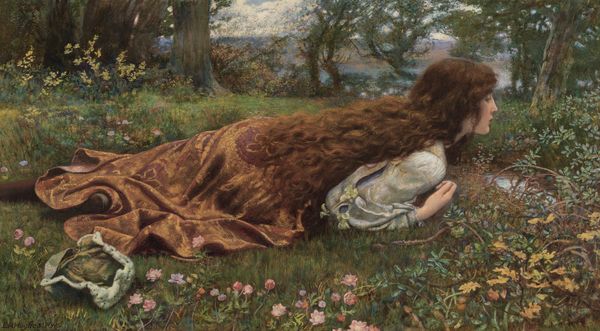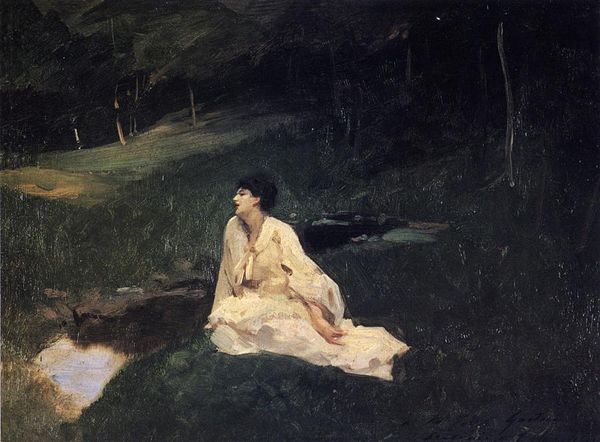
Dimensions: 153 x 15.24 cm
Copyright: Public domain
John William Waterhouse painted ‘The Lady of Shalott’ in the late 19th century, a period marked by significant social and cultural shifts in Britain. This image, depicting a scene from Tennyson's poem, reflects the Victorian fascination with Arthurian legends and romantic themes. But it also invites us to think about the social constraints placed on women during this era. The Lady, cursed to remain isolated, can only view the world through a mirror. This can be seen as a metaphor for the limited roles women were expected to occupy in society. The painting’s somber mood, combined with the Lady’s tragic fate, serves as a visual critique of these restrictions. Waterhouse uses visual codes, such as the decaying tapestry and the extinguished candle, to amplify feelings of oppression. By exploring the cultural context and literary sources behind ‘The Lady of Shalott,’ we gain a deeper understanding of its commentary on Victorian society and gender roles. This is best achieved by consulting historical texts, literary criticism, and studies on Victorian art and culture. Art becomes a powerful tool for understanding and challenging social norms.
Comments
No comments
Be the first to comment and join the conversation on the ultimate creative platform.
